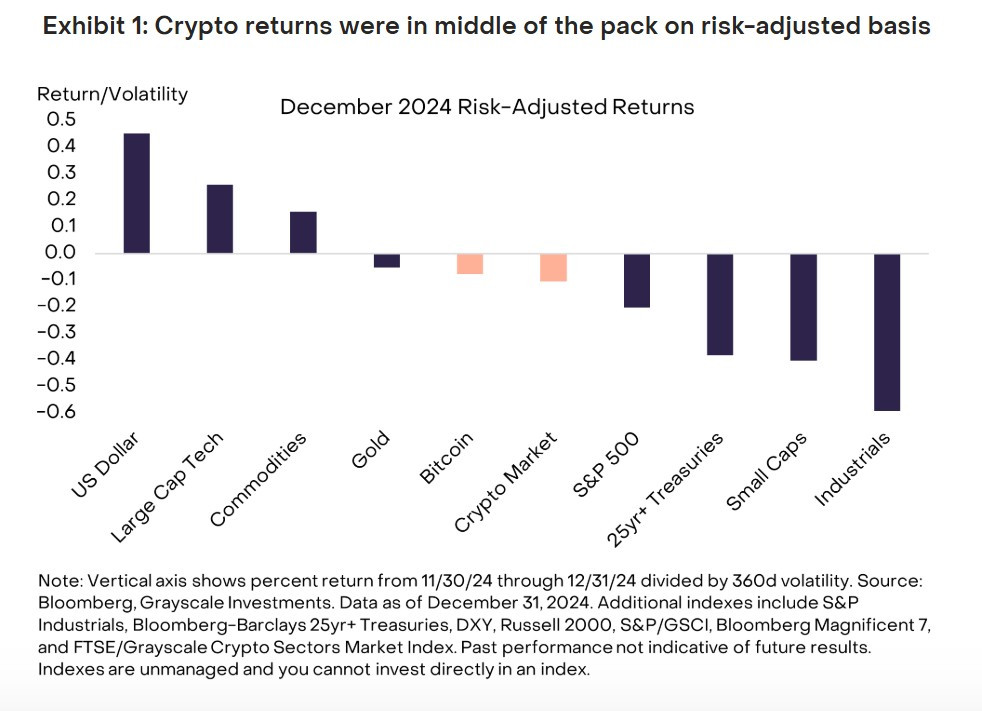Bitcoin’s Future: Why a Bullish Outlook Still Holds Strong

A Temporary Setback or Just a Pit Stop?
Bitcoin’s journey is never without a few bumps in the road, and recent market movements have left some scratching their heads. A strong U.S. jobs report sent Bitcoin’s price dipping below $93,000 on January 10, shaking up some investors. But is this a sign of long-term trouble, or just a short-term reaction to macroeconomic jitters?
Grayscale’s head of research, Zach Pandl, remains optimistic. According to him, Bitcoin’s outlook is still “structurally bullish,” despite temporary headwinds from an increasingly strong U.S. dollar and shifting Federal Reserve policies.
Bitcoin’s Tug-of-War with the U.S. Dollar
So what’s behind this latest price drop? As the U.S. dollar gains strength—fueled by a hawkish Federal Reserve and concerns over trade tariffs—Bitcoin has taken a temporary hit.
Pandl points out that:
“Today’s strong jobs report reduces the chances of Fed rate cuts, further supports the dollar, and may weigh on the price of Bitcoin temporarily.”
With futures markets putting the odds of an interest rate cut in January at less than 3%, Bitcoin is going head-to-head with a rising dollar. The U.S. Dollar Index (DXY) even climbed by nearly 0.5% in morning trading, showing investors are betting on a firmer currency stance from policymakers.
However, Pandl believes this may only be a blip on Bitcoin’s radar. With the U.S. presidential inauguration just around the corner, the environment could shift rapidly in favor of crypto once again.
 Crypto vs. Other Assets
Crypto vs. Other Assets
Crypto returns vs. other asset classes. Source: Grayscale
Why the Long-Term Outlook Remains Bright
It’s not just Grayscale that remains bullish. Industry analysts and major institutions are eyeing 2025 as a blockbuster year for crypto.
Take Steno Research, for example—they’re forecasting 2025 to be Bitcoin’s best year yet, with the digital asset hitting new all-time highs. Why? A “remarkably favorable regulatory environment” could spark a wave of institutional adoption like we’ve never seen before.
The Trump Factor: A Crypto-Friendly Administration?
Following Donald Trump’s victory in the 2024 U.S. presidential election, expectations for regulatory shifts have risen. Trump has promised to appoint crypto-friendly leaders to key financial agencies, aiming to position the U.S. as a global hub for the industry. If policies align with these promises, Bitcoin and other digital assets could see renewed investor confidence.
Even major financial institutions are doubling down. In December, Grayscale adjusted its list of top tokens to reflect potential regulatory impacts stemming from the U.S. election outcome.
The ETF Boom and Surging Institutional Interest
Bitcoin exchange-traded funds (ETFs) have been a game-changer. In November, U.S. BTC ETFs crossed the $100 billion mark, an undeniable signal of rising institutional demand. And there’s more—Steno Research predicts an additional $48 billion in net inflows to Bitcoin ETFs throughout 2025.
This massive influx of institutional capital could create a “demand shock,” pushing Bitcoin’s price even higher. Sygnum Bank has already indicated how these inflows could fuel a significant price rally next year.
The Big Picture: Short-Term Noise, Long-Term Strength
Yes, Bitcoin has hit some turbulence, but zoom out, and the bigger picture still looks incredibly strong. The combination of institutional adoption, a potentially crypto-friendly U.S. administration, and increasing ETF inflows could propel BTC to unprecedented levels.
In the short term, macroeconomic factors like the U.S. dollar and Fed policies will continue to influence Bitcoin’s price movements. But for those looking ahead? The fundamentals remain as bullish as ever.
So, is it time to panic? Definitely not. If anything, this could be just another opportunity for long-term believers to strengthen their positions. 2025 might just be the year Bitcoin rewrites history—again.

